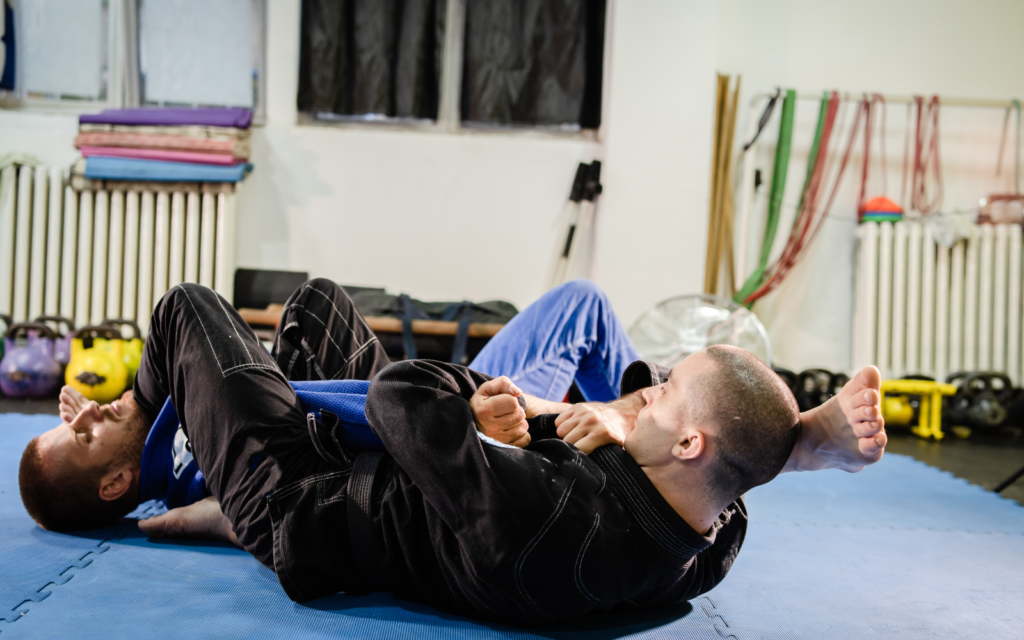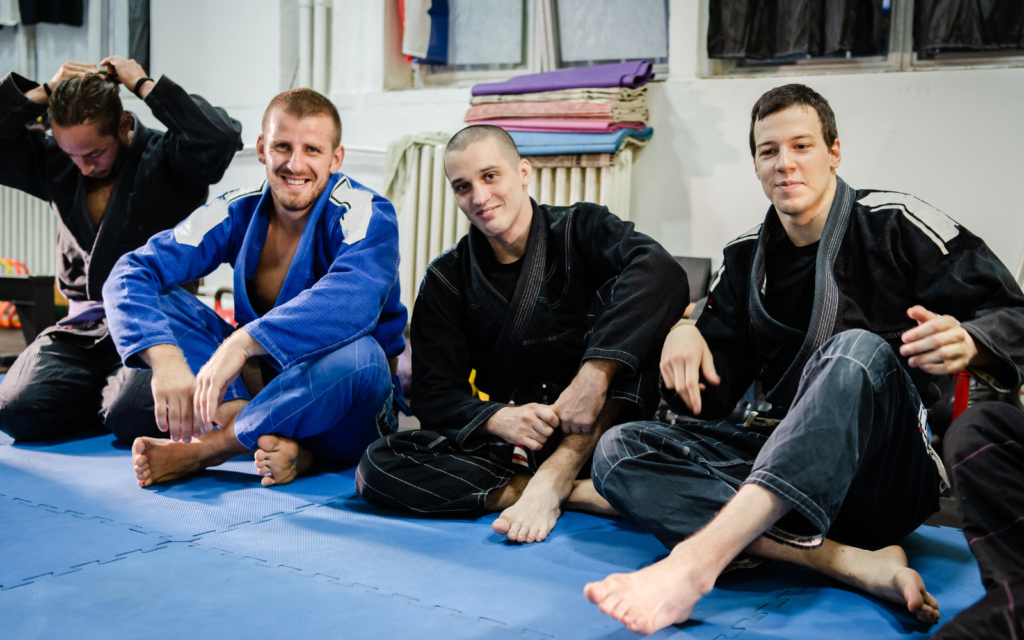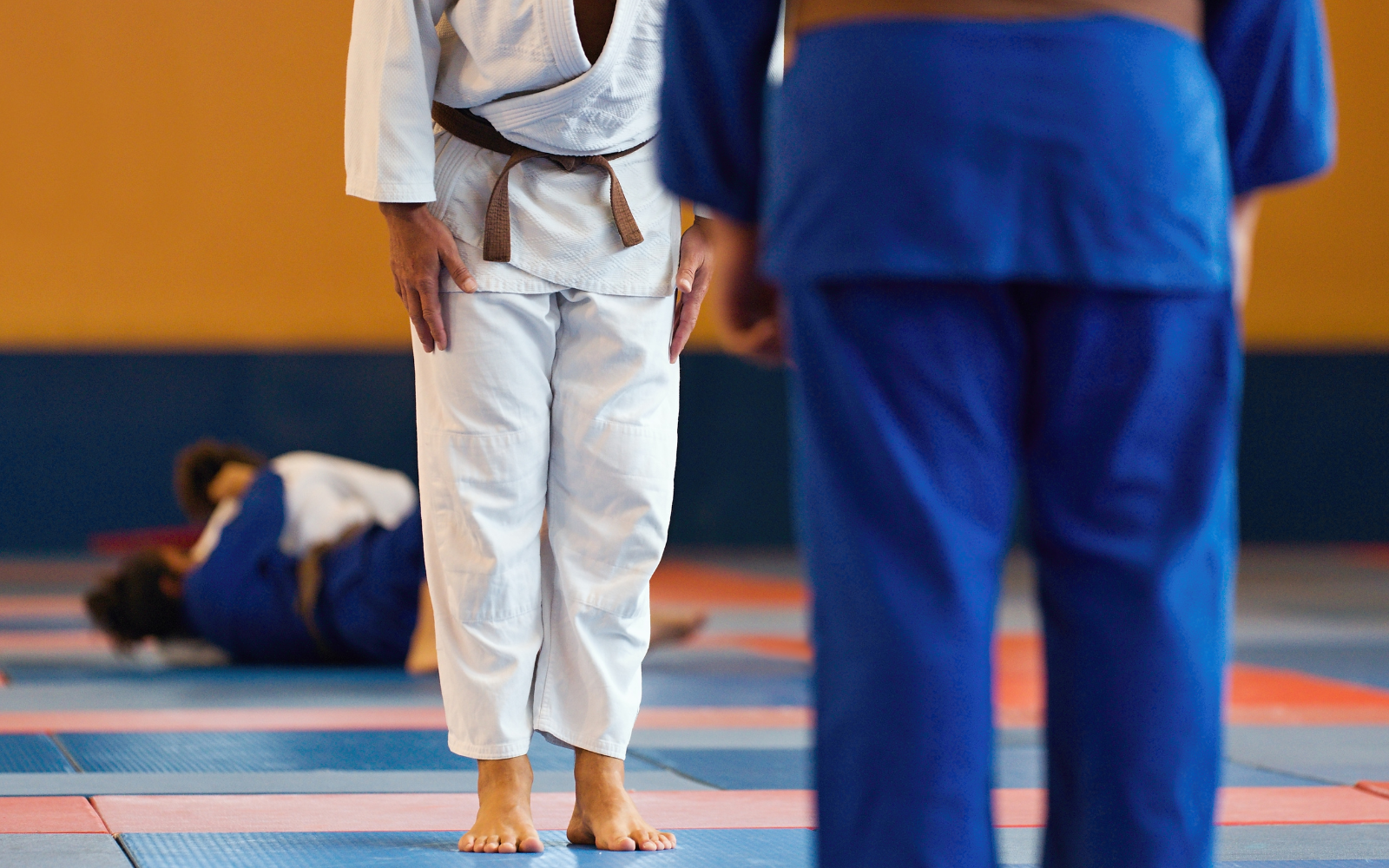Sambo vs BJJ (Brazilian Jiu-Jitsu) is a clash of two powerful grappling martial arts.
I’ve had the pleasure of training both and so have experienced the adrenaline rush of Sambo’s dynamic throws and the meticulous strategy of BJJ’s ground combat. And I’m excited to share some insights with you.
We’ll contrast Sambo’s simplicity with the graded mastery of BJJ, discuss the key differences, and ultimately answer the question: Which martial art wins in a real-life street fight?
What is Sambo?
Sambo is a Russian martial art and combat sport. The name Sambo is an acronym translating “self-defense without weapons” from the Russian: SAMozashchita Bez Oruzhiya.
Born from the harsh realities of the early 20th century Soviet Union, Sambo Fighters blend the agility of judo, the cunning of Jiu-Jitsu, and the raw power of wrestling into a scary and effective fighting machine.
What is BJJ?
Brazilian Jiu-Jitsu is a martial art and combat sport emphasizing ground fighting and submission.
It’s a beautifully complex game of human chess that prioritizes strategy, technique, and mental resilience over strength or speed.
Likewise, BJJ comes from Judo. Hélio and Carlos Gracie learned the principles of Kodokan Judo from a Japanese judoka, Mitsuyo Maeda.
Over time, he and his family refined the techniques to focus more on ground fighting and submission holds. This change was born out of the belief that a smaller, weaker individual could successfully defend against a bigger, stronger attacker by using leverage and proper technique, and this principle remains at the heart of BJJ today.
Key Differences Between Sambo vs BJJ
Although both combat styles are rooted in the Judo teachings of the same man, Jigoro Kano, their different requirements led them down different paths to the same goal of dominating opponents.
Objectives
Sambo was created in the Soviet Red Army with the aim of self-defense in its most pragmatic form.
A Sambo fighter seeks to end a confrontation swiftly and decisively, using powerful throws, complex locks, and an array of submission techniques. The goal is to be able to handle any situation with the least possible harm to oneself. Therefore Sambo embodies a practical martial art with real-world effectiveness.
Conversely, BJJ thrives in the art of control and patience. The BJJ practitioner’s goal is to outmaneuver an opponent, establish a dominant position, and apply a submission.
BJJ’s has an undeniable artistic element as practitioners constantly seek to refine their technique to its purest form getting into a flow state.
It’s like comparing fire (Sambo) and water (BJJ).
Techniques
Both fighting styles have an array of effective techniques that make them potentially deadly.
In Sambo, practitioners execute powerful Judo techniques for throws and wrestling takedowns. And once on the ground, they’re also proficient in various leg locks.
But as we’ll cover soon below, there are different types of Sambo and Combat Sambo. The style trained by the military includes knees, elbows and other Muay Thai inspired techniques.
Check out this awesome Sambo fight and see why it can be such a great ‘gateway drug’ into MMA:
In contrast, BJJ specializes in ground control and the guard position.
BJJ is renowned for its intricate submission techniques involving chokes and joint locks and effective BJJ moves and positions like:
- Rear-Naked Choke
- Triangle Choke
- Armbar
- Kimura
- And the list goes on with literally 600+ more moves

Rules
There are three primary forms of Sambo: Sport Sambo, Combat Sambo, and Freestyle Sambo.
Sport Sambo is similar to judo but has some rules, protocols, and uniform differences. For instance, leg locks are allowed in Sport Sambo, while chokes, neck cranks, arm bars, and other submissions are not.
Combat Sambo, as the name suggests, is a more combative and aggressive form incorporating strikes and more military self-defense techniques.
The American Sambo Association created Freestyle Sambo and allowed techniques from both Sport and Combat Sambo with an added allowance for chokes.
Belt System
BJJ, with its emphasis on mastery and growth, employs a detailed belt system. It begins with the white belt, which represents the novice practitioner.
Blue belts, purple, and brown follow this, leading up to the black belt – a testament to years of dedication and skill.
Beyond black, there are degrees represented by stripes and even higher belt levels – red-black (coral), and the pinnacle, the red belt, which symbolizes a lifetime dedicated to the art of BJJ.
Children have their own separate system, starting from white and progressing through various colors until they reach green, where they then move into the adult system.
Meanwhile, in classic pragmatic fashion, Russia’s Sambo maintains a much simpler belt system.
Traditionally, there are only two colors – red and blue. These don’t necessarily denote rank or skill level but are primarily used to distinguish competitors during a match.
But some organizations, such as the International Sambo Federation, have approved a grading system, borrowing the belt color progression based on the number of years in training. However, it’s not universally accepted or applied in the Sambo community.
Equipment
Sambo competitors don a distinctive outfit known as a kurtka, a jacket that’s a hybrid between a gi top and a judo jacket. It’s worn with Sambo shorts and Sambo shoes (very similar to wrestling shoes with soft leather soles).
Brazilian Jiu-Jitsu is often divided into “Gi” and “No-Gi”.
Gi BJJ is practiced with the traditional uniform similar to Sambo, which can be used to control the opponent through various grips.

On the other hand, No-Gi is practiced in shorts, and a rash guard (learn more about rash guards and what wrestlers wear under their singlet here), which resembles more closely the conditions you might find in mixed martial arts.
Competition
The goal in a Sambo match is to win decisively, whether by earning enough points through throws and pins or by making the opponent submit using joint locks.
Matches are fast-paced, and the scoring system encourages dynamic action, favoring throws that result in a clean landing on the back, much like an ‘Ippon’ in judo. This is why a Sambo practitioner trains hip throws and all aspects of fighting to become a complete fighter.
Contrast this with BJJ, where each move is deliberate, aiming to achieve a dominant ground position, transitioning from guard to mount or back control.
Patience is key as fighters meticulously work to set up submission holds. Points are awarded for successful sweeps, takedowns, and gaining superior positions. And unlike Sambo, throwing an opponent onto their back won’t end the match but rather set up the final goal of a choke or joint lock.
BJJ competitions showcase technical mastery and strategic depth, while Sambo matches are swift, dynamic encounters emphasizing versatility.
Availability to Train
When comparing the accessibility of Sambo and Brazilian Jiu-Jitsu (BJJ) training, it’s clear that geographical nuances come into play.
With its roots deep in Russian culture, Sambo isn’t as globally widespread as BJJ. The scarcity of Sambo training centers outside Russia can challenge those interested in this dynamic martial art. Aspiring Sambo fighters may need to travel abroad or seek proficient trainers who offer private or group classes at local gyms or fitness centers.
Conversely, many BJJ training centers are available across many countries, making it readily accessible for anyone interested. These centers often provide classes in conjunction with fitness programs or wider MMA training opportunities, catering to a wide spectrum of individuals.
Sambo vs BJJ: Which is More Successful in MMA?
Of course, BJJ has had a huge impact on MMA, which is also one reason BJJ has grown so fast around the world. Rorion Gracie co-created the original version of UFC before Dana White and the Fertittas bought it.
And ever since UFC 1, where Royce Gracie, the smallest member of the Gracie clan, tapped out massive opponents to win the tournament, BJJ has played a huge role and influence in the evolution of MMA. And as a result, to compete at a high level, especially in the UFC, fighters typically need a black belt, brown belt, or at the very least, a purple belt.
But despite its relative obscurity compared to other martial arts (being super Russian and all), Sambo has been a driving force in cage fighting and the world of mixed martial arts.
Many of history’s most successful Russian MMA fighters have backgrounds in Sambo, including Fedor Emelianenko, Khabib Nurmagomedov, and Islam Makhachev.
A recent test of Sambo vs BJJ took place at UFC 280. Islam submitted Charles Oliveira via arm-triangle choke to claim the Lightweight championship title in the second round.
Who Wins in a Real Fight?
So considering 2 extremely high-level fighters just tested out their styles in the UFC cage, it begs the question of how they’d fair in real life.
With its aggressive fighting style and practical techniques, Sambo offers an expansive repertoire of devastating throws, dynamic strikes (in Combat Sambo), and complex joint locks, including a unique array of leg locks. This broad spectrum of techniques equips Sambo practitioners to handle both standing and ground confrontations effectively, providing an edge in unpredictable street fighting scenarios.
On the other hand, BJJ’s emphasis on ground fighting provides its practitioners with a deep arsenal of techniques to control and submit an adversary, even one who is much larger or stronger.
In real-life situations, where fights often end on the ground, BJJ’s sophisticated ground game, chokes, and joint locks can be immensely practical and effective.
BJJ also emphasizes patience and strategy over aggression, which could be advantageous in managing the chaos of a street fight.
However, it’s crucial to remember that the outcome of a real-life confrontation depends not just on the martial art but more on the individual’s skill level, situational awareness, and ability to adapt under pressure.
And it’s also important to remember that patience may not be an advantage since most street fights don’t last a minute.
In the end, both Sambo and BJJ offer valuable and practical skills for self-defense.
They each have their strengths, and the effectiveness of either would largely depend on the practitioner’s mastery and application in a given scenario. But as always, the best strategy is to run!
Sambo vs BJJ in Closing
So there you have it.
Together, we’ve looked at Sambo’s pragmatic throws and adaptability and contrasted them against BJJ’s methodical ground game and technical mastery.
While Sambo’s aggressive fighting style provides a robust set of tools for real-life confrontations, BJJ’s emphasis on ground techniques offers an effective defense in street fights.
Yet, we’ve seen that the victor in a street fight largely hinges on the practitioner’s skill, adaptability, and level of mastery. Sambo and BJJ have strengths and weaknesses and offer unique paths to help you become a more effective martial artist.
I prefer Sambo, but you can benefit from trying both!
